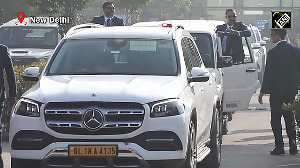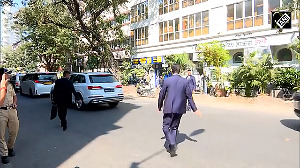Kapoor tells Surajeet Das Gupta and Ishita Russell the company will require brand new strategies to get the next 100 million customers, three-fourths of whom will be from rural areas. Excerpts:
Do you need another plan to get the next 100 million subscribers?
The two dominant segments in the next 100 million are the youth and those living in rural areas. There are 560 million youth in India, more than the population of the US and Indonesia. Our outlook needs to completely transform to understand the youth their ability to upgrade to more value-added services is very high and we need to do a lot to meet their requirements.
Right now, around half the new customers are rural; in the next-100, this could shift to three-fourths just 13 per cent of rural India has phones, so theres a long way to go. What will change for us is the brand-connect, the product offerings, the communication and the distribution.
We have partnered with IFFCO, a fertiliser company, to help us go rural and that is working very well. Since there are 400 different languages/dialects, weve developed the Airtel Service Centre concept we have around 18,000 of these up already, in villages, trying to serve the local community in their dialect; we have a local face serving them instead of someone from urban areas. Breaking into this market will require more creativity and you will see changes in our overall approach.
What other changes are expected?
In future, we will have the ability to participate in the revenues of many industry verticals it will be m-commerce, music, video, gaming, retail device-to-device applications will get developed so that we look at the consumers entire wallet, not just the telecom share of his/her wallet.
Today, we sell more music than HMV and Saregama put together once the data-pipe gets broadened with 3G and HSPA, you will see more internet applications coming up. But the biggest opportunity will be in the m-commerce arena.
We are focusing on three or four areas. First, the area of financial inclusion involving 80-85 per cent of the population which continues to remain unbanked. The mobile phone will act as your ATM in the future. The domestic money-transfer market is another huge opportunity.
Around Rs 50,000 crore (Rs 500 billion) gets transferred from one part of the country to another through post offices alone every year. We can offer better value-for-money here. International money transfer is another opportunity around $42 billion gets transferred to India each year. We are not competing with banks and Western Union, but will work with them to speed up the offering and make it pervasive because we have 1.2 million retail outlets. No one has more reach.
We have also invested into some very sophisticated service-delivery platforms which can be leveraged tomorrow for information about the customer, for targeted marketing and even promotions.
Others are also trying this.
Currently, under a tenth of revenues come from non-voice. And this concentrates mainly on the mobiles share of the wallet. Few have moved to target the entire wallet. The opportunity is very real and we need an ecosystem of partners to make it happen.
So will you have niche brands for rural markets and for the youth?
We used to have multiple brands Magic was a brand of prepaid that we had but we discontinued it since we see more merit in one Airtel common brand which extends into various parts of a customers lifestyle. The scalability that this brings to us is a lot higher.
How will new players targeting these very segments affect you?
When we entered the market, the customer was more forgiving and more willing to wait since all operators were at the same level. Today, the customer experience has reached another level and so have their expectations. It took us 13 years to build a network to be able to service rural areas.
If resources are not such a problem today, it may take less time to replicate this, but itll still take at least 5-6 years. No part of the world has seen 10-12 operators survive and India wont be any different.
Will the next 100 million be new users or those churning from your rivals?
Ninety per cent of the market is with the top 4-5 operators, so churn cannot be the strategy for established players. Leaders have to look at uncovered areas in the country. There will be new opportunities in even urban areas Delhi has nearly 100 per cent penetration, so we have to look at multiple connections for subscribers.
How important will average revenues per user (ARPU) be for the next 100 milllion?
When we say the next 100 million, we dont only mean mobile, we mean mobile and DTH as a mass market. There will be interplay between the DTH and mobile services in the future. The expansion will come from both mobile and DTH and mobile-internet.
ARPUs coming down, as we go to rural areas, is natural. Our philosophy is that as long as our capital productivity is improving, our operating costs and productivity are getting better, and as long as our topline is increasing, we never shy away from investments.
In the last one year, our customers have gone up by 51 per cent and our revenues have gone up by about 40 per cent, while our minutes of usage fell by only 4 per cent. ARPUs are not that important, we have always believed in total minutes of usage.
How will the 3G market pan out?
3G will require a full ecosystem if it is to work at full potential getting in just 2-3 players wont allow this to happen. 3Gs success will depend on the availability of devices, applications and content.
The base that we have been building over the last few years is 3G-ready just selling a pipe doesnt help, you have to have the right content and application for the customer to experience the benefit of 3G. The GSM Association is working on getting affordable 3G devices below $50 to create the critical mass that is required.
How will number portability affect the market?
Mobile number portability is more relevant in countries where you have long-term contracts. India is a prepaid market where churns are reported to be upwards of 5 per cent per month. I dont think consumers will stop switching without number portability. Number-portability wont be a game-changing opportunity for anybody. The exit and entry cost on prepaid connections is so low, I dont think mobile number portability really adds to value.
How do you see the threat from existing CDMA firms which have begun GSM services?
The customer is very sharp he takes something the moment you offer it free, and dumps it the moment the offer ends. If you make attractive offers to new customers and not to existing ones, the latter decide to become new customers. People have realised that just looking at customer numbers without looking at revenues is not sensible.
There are several examples of firms who have a 10 per cent market share, but just a 2 per cent share of industry revenues. We took several years to establish ourselves in circles where we began as the fourth operator. The gestation periods for the 10th or the 11th operator are going to be significantly higher.






